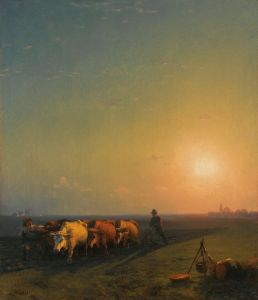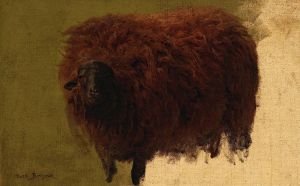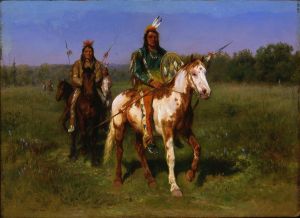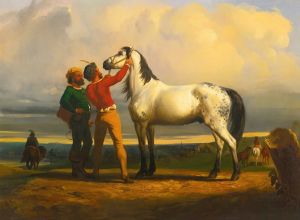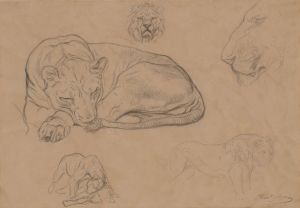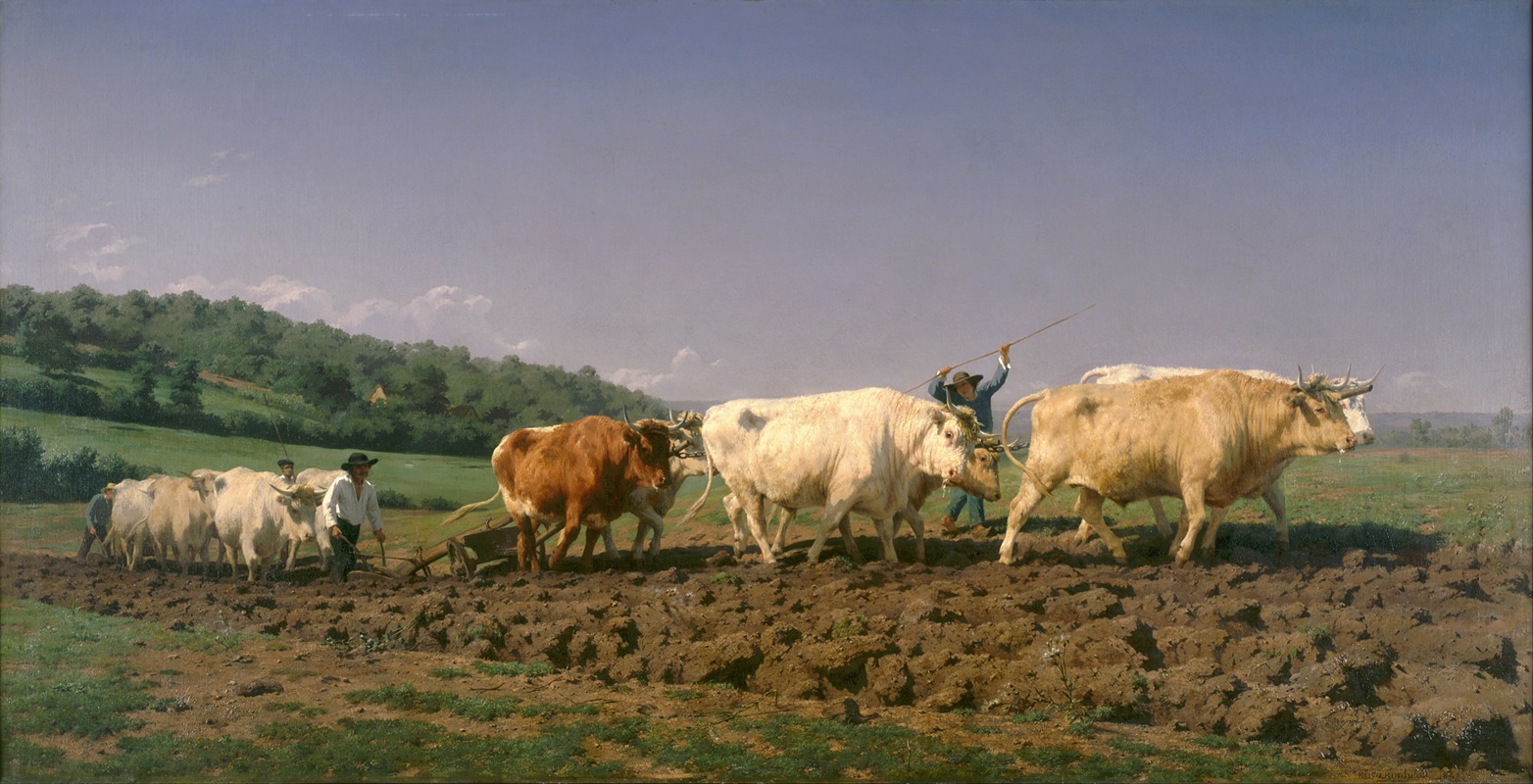
Ploughing in Nevers
A hand-painted replica of Rosa Bonheur’s masterpiece Ploughing in Nevers, meticulously crafted by professional artists to capture the true essence of the original. Each piece is created with museum-quality canvas and rare mineral pigments, carefully painted by experienced artists with delicate brushstrokes and rich, layered colors to perfectly recreate the texture of the original artwork. Unlike machine-printed reproductions, this hand-painted version brings the painting to life, infused with the artist’s emotions and skill in every stroke. Whether for personal collection or home decoration, it instantly elevates the artistic atmosphere of any space.
"Ploughing in Nevers" is a notable painting by the French artist Rosa Bonheur, completed in 1849. Rosa Bonheur was a prominent 19th-century painter and sculptor, renowned for her realistic depictions of animals and rural scenes. Born in 1822 in Bordeaux, France, Bonheur was one of the most celebrated female artists of her time, breaking barriers in a male-dominated art world.
"Ploughing in Nevers" is an exemplary work that showcases Bonheur's meticulous attention to detail and her passion for rural life. The painting depicts a team of oxen plowing a field in the French region of Nevers, capturing the essence of agricultural labor during the mid-19th century. Bonheur's ability to portray the strength and majesty of the animals, as well as the harmony between humans and nature, is evident in this piece.
The painting is characterized by its realistic representation of the scene, a hallmark of Bonheur's style. She was known for her dedication to studying her subjects in their natural environments, often visiting farms and rural areas to observe and sketch animals in action. This commitment to realism is reflected in the lifelike depiction of the oxen, the texture of their hides, and the dynamic movement captured in the act of plowing.
Bonheur's work was part of a broader movement in art during the 19th century that focused on realism and the accurate portrayal of everyday life. Her paintings often highlighted the dignity and importance of rural labor, a theme that resonated with audiences during a time of significant social and economic change in Europe. "Ploughing in Nevers" is no exception, as it presents an idealized yet honest view of agricultural work, emphasizing the connection between humans and the land.
The painting was well-received at the time of its completion and contributed to Bonheur's growing reputation as a leading artist. Her success was further cemented by her participation in the Paris Salon, the official art exhibition of the Académie des Beaux-Arts in Paris, where her works were regularly displayed. Bonheur's achievements were particularly significant given the challenges faced by women artists in gaining recognition and acceptance in the art world during the 19th century.
"Ploughing in Nevers" is housed in the Musée d'Orsay in Paris, which is home to many of Bonheur's works. The museum is renowned for its extensive collection of 19th-century art, including paintings, sculptures, and decorative arts. Bonheur's legacy as a pioneering female artist and her contributions to the realist movement continue to be celebrated today, with "Ploughing in Nevers" standing as a testament to her skill and vision.
In summary, "Ploughing in Nevers" by Rosa Bonheur is a significant work that exemplifies the artist's dedication to realism and her ability to capture the essence of rural life. Through her detailed and dynamic portrayal of agricultural labor, Bonheur not only highlighted the beauty of the natural world but also underscored the importance of the human connection to the land.





